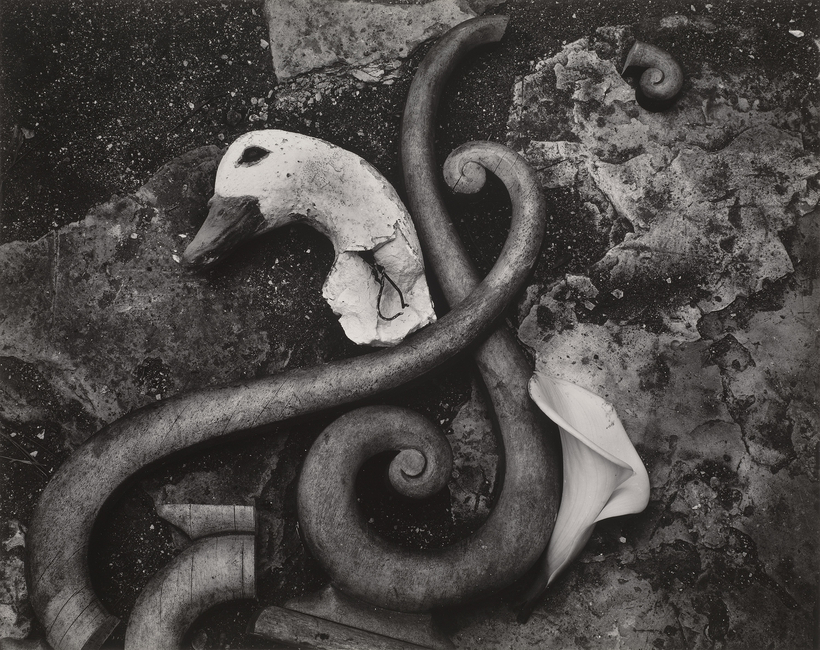The masterpieces of still-life painting leap readily to mind. Those “banquet pieces” from the Dutch Golden Age depicting lavish spreads of crusty bread, cheese, enticing mounds of grapes, tipped-over goblets, and gutted candles. Caravaggio’s basket of fruit. Manet’s bunch of asparagus. Cézanne’s apples. A veritable Olive Garden of delights.
With the invention of photography, the flick of the painter’s brush was joined by the click of the camera, and still-life photography was born, extending and advancing the art of inanimate portraiture. Since the early 20th century, when soft-focus treatments of water vases and drooping petals from pioneers such as Baron Adolph de Meyer beatified the commonplace, still-life photography has accumulated its own abundant array of tabletop treasures and everyday objects that appear to emanate an eerie afterlife of their own.
With “The Stillness of Things: Photographs from the Lane Collection”—an eclectic exhibition that opens today at the Museum of Fine Arts, Boston—still-life painting’s younger, brassier cousin gets to show its stuff.

Consisting of 60 photographs drawn from the compendious Lane Collection, among them works by Irving Penn, Josef Sudek, and, yes, Baron Adolf de Meyer, “The Stillness of Things” nods to tradition with painterly abstractions—Olivia Parker’s luminous dangling artichoke, and Charles Hippolyte Aubry’s Thistles, which mimics the fine dynamic delicacy of Japanese brushwork.
It also includes enshrinements of dime-store Americana, such as Edward Weston’s study of a vintage six-pack carton of Dr. Pepper. Another Weston image, the haunting Dead Rabbit, Arizona, hearkens back to the genre of vanitas still-life painting that expressed the transience of life, our eventual state of bone and ruin.

Ansel Adams, the large-format-camera monumentalist known best for his snowcapped mountains and moonrises, is represented by an uncharacteristic still life of scissors and thread that looks like a Surrealist concoction. Another of his images, an abandoned stove in a Pennsylvania farmyard, has the dignity of a derelict altar.
While some still-life objects here seem to exist entirely on their own—compact, self-composed, and reticent—others suggest a random, mysterious movie frame or fragments from a short story, tugging the imagination for interpretation, such as Imogen Cunningham’s The Unmade Bed and Robert Frank’s witty composition of two empty chairs sitting side by side as if they’re having a nice chat.
In an exhibition where most of the images are black and white, Robert Heinecken’s color still of a warped, scorched TV dinner with a bent knife, fork, and spoon is a genuine eyepopper. The aluminum tray looks like the remnant of an atomic blast, or a prop from a David Lynch film—maybe both!

The avatar for the event is Adam Fuss’s spectral daguerreotype of a butterfly that seems suspended in liminal eternity against a sketchy, stormy backdrop. It’s the still life as sigil. —James Wolcott
“The Stillness of Things: Photographs from the Lane Collection” is on at the Museum of Fine Arts, Boston, through February 27
James Wolcott is a Columnist for AIR MAIL. He is the author of several books, including the memoir Lucking Out and Critical Mass, a collection of his essays and reviews


 Discover
Discover